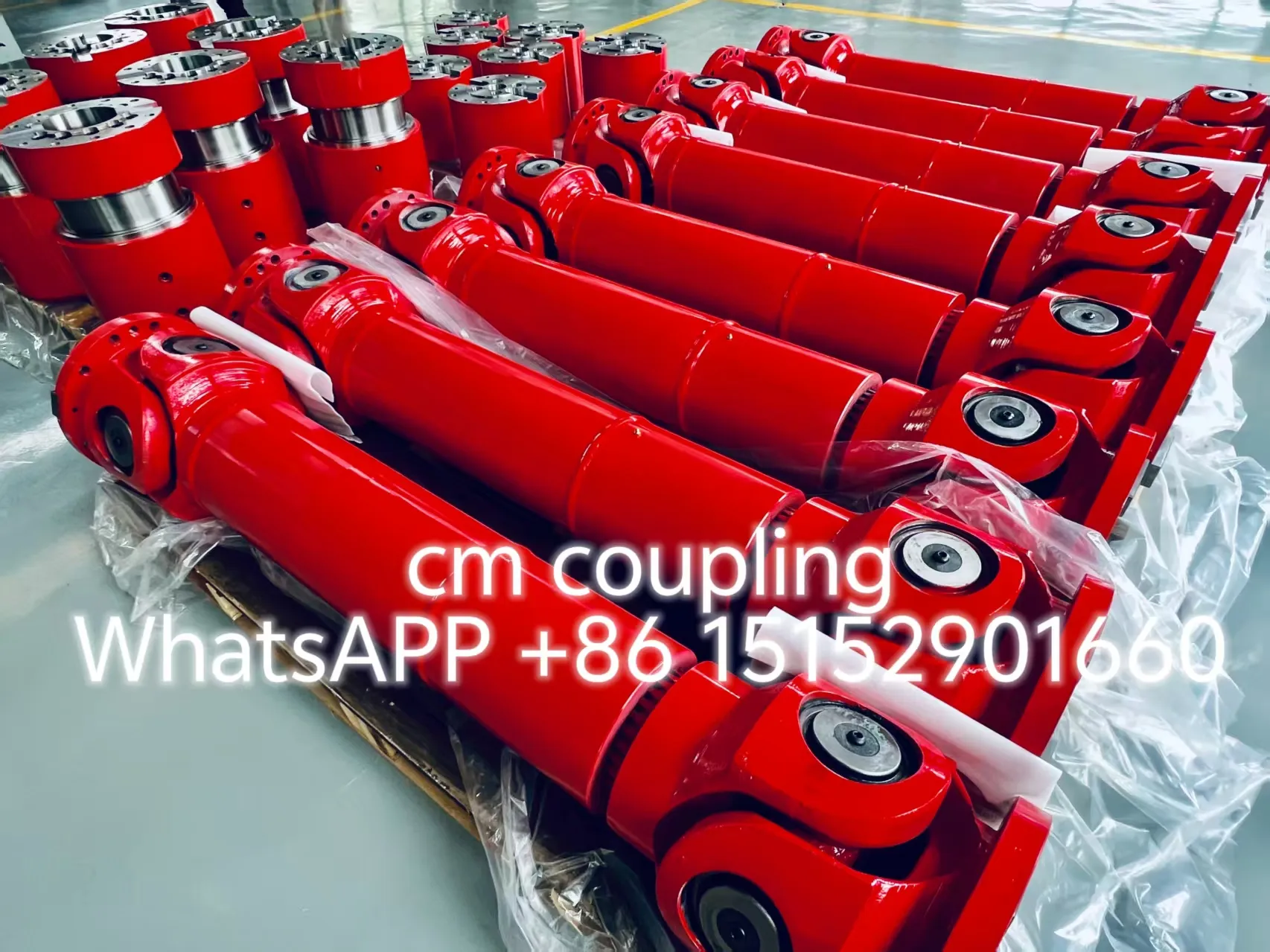Copyright © 2025 Chuangming Coupling (Jiangsu) Co.,Ltd.
Universal Couplings: The "Flexible Joints" of Mechanical Transmission
2025-10-17
In the field of mechanical transmission, there is a type of key component that acts like a "flexible joint", capable of stably transmitting power even when there are angular and positional deviations between two shafts. This component is the universal coupling. The red part shown in the picture is a typical example of a universal coupling.
The core advantage of a universal coupling lies in its "universal" feature. It relies on the cooperation of a cross shaft and a yoke to achieve power transmission within a certain angle range (usually up to 45° or even more) between two shafts. For instance, in the automotive transmission system, there are installation position deviations and relative movements during driving between the engine and the drive axle. The universal coupling can flexibly adapt to these conditions and ensure continuous power transmission.
Structurally, high-quality universal couplings use high-strength alloy steel to manufacture key components, such as the red main body in the picture, which undergoes heat treatment and other processes to have excellent fatigue resistance and wear resistance. The bearing part uses precision-processed needle roller bearings or ball bearings to reduce frictional losses during rotation and improve transmission efficiency.

In industrial scenarios, universal couplings are widely used. In the metallurgical industry, for example, in steel rolling mills, it is necessary to transfer the high torque from the motor to the rolls, and the rolls' positions may change slightly during operation. Universal couplings can reliably transmit power. In heavy machinery like cranes, the slewing mechanism also relies on them to achieve power transmission under complex working conditions.
Moreover, universal couplings can be customized according to different needs. For high-speed, high-precision equipment, the structural design is optimized to reduce dynamic balance errors. For heavy-duty applications, the yoke and cross shaft are thickened and strengthened to ensure load-bearing capacity. The neatly arranged universal couplings in the picture not only demonstrate the precision and regularity of industrial manufacturing but also imply their crucial role as "flexible joints" in mechanical systems across various industries, ensuring the stable and efficient operation of equipment.
In the field of mechanical transmission, there is a type of key component that acts like a "flexible joint", capable of stably transmitting power even when there are angular and positional deviations between two shafts. This component is the universal coupling. The red part shown in the picture is a typical example of a universal coupling.
The core advantage of a universal coupling lies in its "universal" feature. It relies on the cooperation of a cross shaft and a yoke to achieve power transmission within a certain angle range (usually up to 45° or even more) between two shafts. For instance, in the automotive transmission system, there are installation position deviations and relative movements during driving between the engine and the drive axle. The universal coupling can flexibly adapt to these conditions and ensure continuous power transmission.
Structurally, high-quality universal couplings use high-strength alloy steel to manufacture key components, such as the red main body in the picture, which undergoes heat treatment and other processes to have excellent fatigue resistance and wear resistance. The bearing part uses precision-processed needle roller bearings or ball bearings to reduce frictional losses during rotation and improve transmission efficiency.

In industrial scenarios, universal couplings are widely used. In the metallurgical industry, for example, in steel rolling mills, it is necessary to transfer the high torque from the motor to the rolls, and the rolls' positions may change slightly during operation. Universal couplings can reliably transmit power. In heavy machinery like cranes, the slewing mechanism also relies on them to achieve power transmission under complex working conditions.
Moreover, universal couplings can be customized according to different needs. For high-speed, high-precision equipment, the structural design is optimized to reduce dynamic balance errors. For heavy-duty applications, the yoke and cross shaft are thickened and strengthened to ensure load-bearing capacity. The neatly arranged universal couplings in the picture not only demonstrate the precision and regularity of industrial manufacturing but also imply their crucial role as "flexible joints" in mechanical systems across various industries, ensuring the stable and efficient operation of equipment.